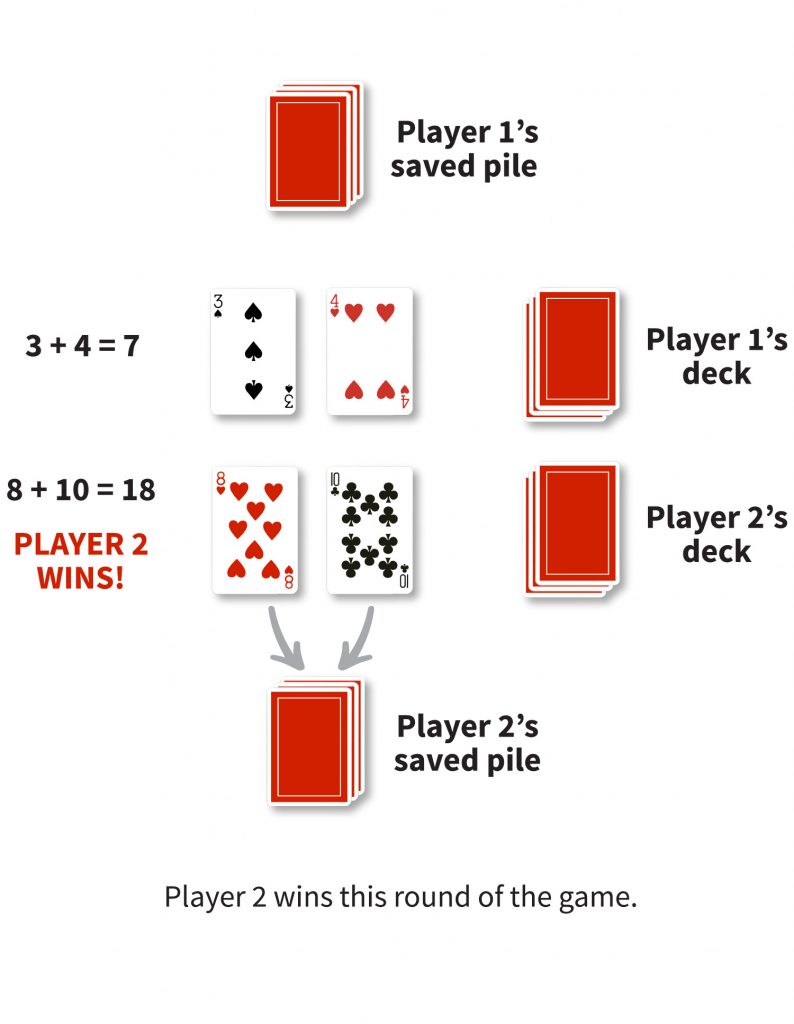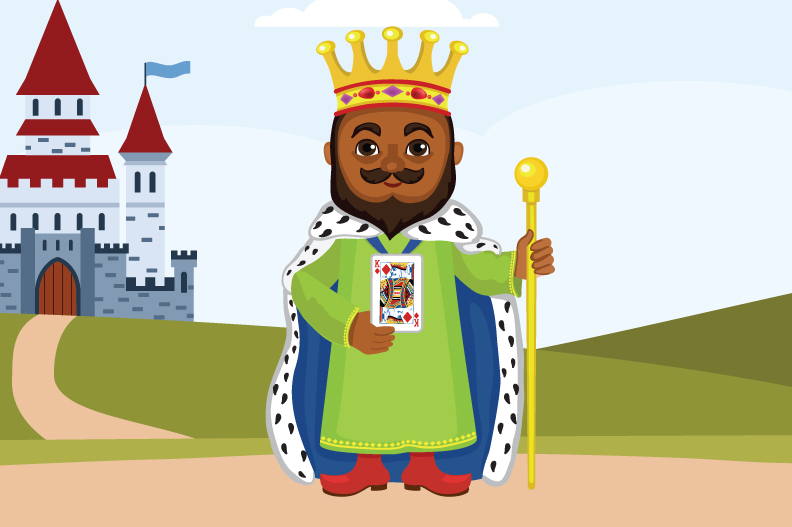Activity Summary
The goal of this 2-4 player game is to win the round by having the highest total between two cards. The player who wins the most rounds wins the game.
Instructions
Setup
- Take out all face cards except the Kings. Aces count as 1.
- Be sure to shuffle the cards.
- Pass out all the cards in the deck so each player has an equal number.
Play
How a turn begins:
Players take two cards from their pile and put them in a row number side up. Each player adds their two cards together and then says the addition problem out loud. For example, “3 + 4 = 7” or “8 + 10 = 18.”

How a turn ends:
The player with the highest total wins all the cards and puts these cards in their own pile of saved cards. If a player gets a King, that player wins no matter what the totals of the other players’ cards are. If two players have the same total or both have Kings, they play another round (receiving two more cards for each player). The person who wins that turn gets all the cards.
How the game ends:
Play until the players have no cards left. The winner is the one with the most cards in their own saved pile.
Tips
Read the Mini Story
- Make playing even more fun by telling a story about the game: In this game, the King likes to pop up when you don’t expect it. You never know when he’ll be hiding among the cards. And when he does, he always wins. You’ll see when you play the card game.
Support Learning
- If your child is having a hard time adding the numbers, suggest they count with their fingers or count the shapes on the cards.
- Show your child a way to count more efficiently by counting up from the card with the highest number rather than counting all the numbers on both cards. For example, if your child has one card that’s a 5 and one that’s a 3, the child can say “5” then put the 5 card to the side. Next, they can count up from 5 using their fingers, saying “I start with 5, so three more fingers are 6, 7, 8, so the total of 5 + 3 is 8.” See the Easy Counting game to practice counting on.
- For children who know some math facts, try reminding them of a related math fact not on the cards that you think they know. In this way, they can build on facts they do know. For example, children often know their doubles or tens. So when they try to add 6 + 5 you could say, “What is 5 + 5?” After the child answers “10,” say, “You have a 6, which is 1 more than 5, so what is 6 + 5?” For 8 + 3, you could say, “What is 8 + 2?” then, “What is 8 + 3?” See the Hidden 10s game to practice math facts.
Adjust the Challenge
Make It Easier
- Take all the Kings out of the deck.
Mix Things Up
- Make the player with the lowest total on the cards (instead of the highest) the winner.
- Have the King be a wild card and be any number the player wants.
Make It Harder
- Have each player use three cards to be added up instead of two cards.
What to Play Next
If your child is still practicing the skills in this game, then continue having fun playing this game! Try the tips to support learning and ways to adjust the challenge. When your child is ready for a new game, play Jack Subtracts.
Download this activity
English version
Download Game 7